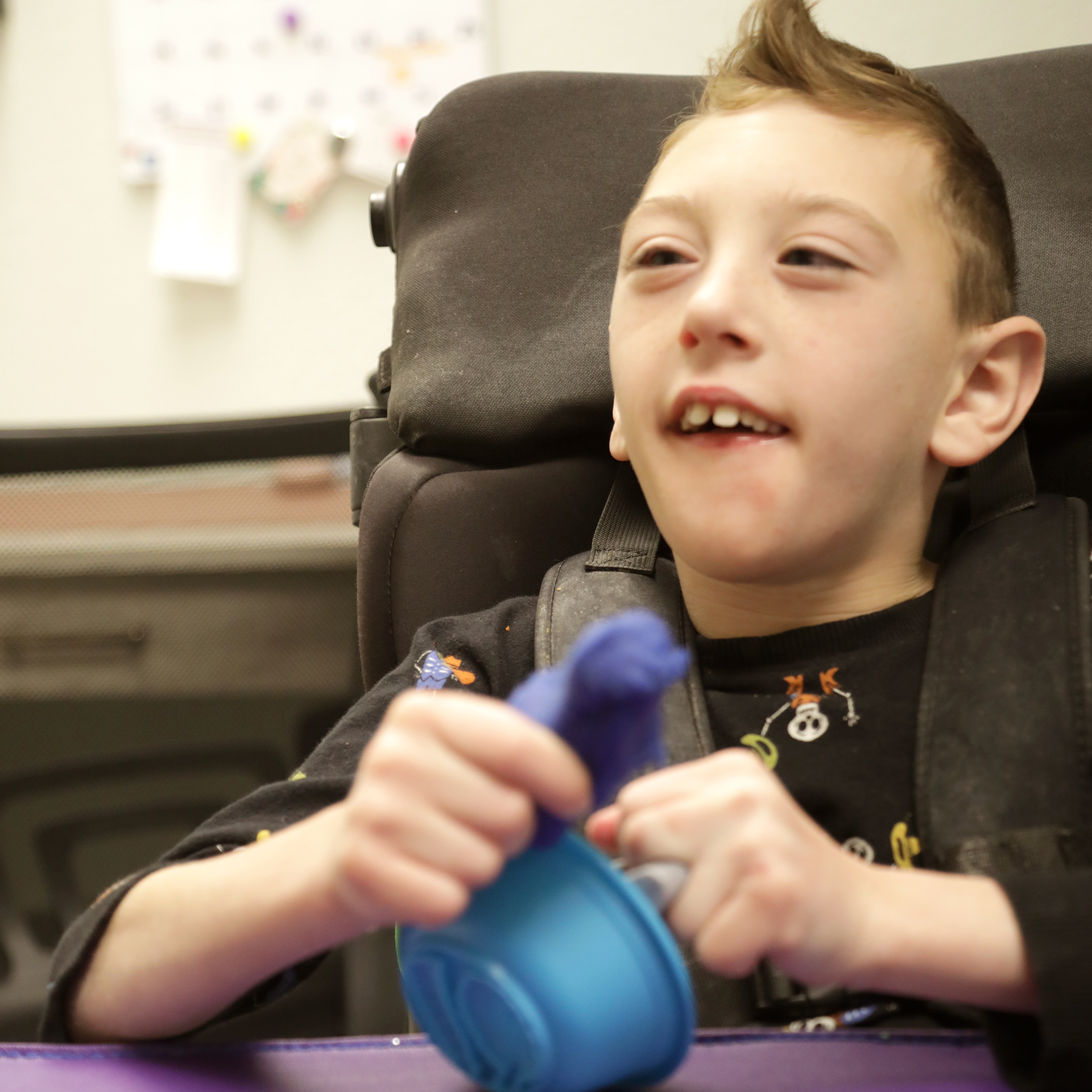Stuttering Techniques


Understanding Stuttering and Its Management
Stuttering is a complex fluency disorder characterized by disruptions in speech flow, such as repetitions, prolongations, and blocks. It affects individuals differently across age groups and can have emotional and social impacts. Modern speech therapy offers various techniques aimed at reducing disfluencies, boosting confidence, and improving overall communication. This article explores the types of stuttering, diagnostic approaches, and effective treatment techniques designed to address the physical, neurological, and psychological facets of the disorder.
Types of Stuttering and Their Characteristics

What are the different types of stuttering?
Stuttering manifests in various forms, each associated with different causes, ages of onset, and speech behaviors. The most common type is developmental stuttering, which typically appears in early childhood and may persist into adulthood. This form often involves repetitions (such as "w-w-want"), prolongations (holding sounds longer), and blocks (silent pauses where speech gets stuck). It may be accompanied by secondary behaviors such as eye blinking, muscle tension, or facial grimacing.
In contrast, neurogenic stuttering arises from neurological injuries or illnesses, like stroke or traumatic brain injury. This type often appears suddenly and may involve inconsistent disfluency patterns without the typical secondary behaviors seen in developmental stuttering.
Psychogenic stuttering, though less common, results from psychological trauma or emotional disturbances. It often begins suddenly and may be highly variable, with some individuals exhibiting consistent speech blocks or repetitions linked to emotional stress.
Throughout these types, disfluency types include:
| Disfluency Type | Description | Typical Context |
|---|---|---|
| Part-word repetitions | Repeating parts of words, e.g., "w-w-want" | Childhood or stress-inducing situations |
| Prolongations | Extending sounds, e.g., "ffffree" | All ages, can be situational |
| Blocks | Silence or stoppages in speech | During anxiety or tension |
| Physical tics or struggle behaviors | Tension, eye blinking, facial movements | Often with severe stuttering |
Stuttering severity varies greatly, influenced by situational, emotional, and physical factors, with some individuals hiding or altering their speech to mitigate disfluency. It is essential to recognize these variations to develop effective treatment strategies.
Core Symptoms and Behavioral Indicators of Stuttering
What are the signs of stuttering?
Stuttering is characterized by specific patterns of speech disfluencies that stand out during communication. These include monosyllabic whole-word repetitions, where the speaker repeats entire words, and sound repetitions, involving repetitions of individual sounds or syllables. Prolongations, where sounds are stretched out for an extended period, often about two seconds, are also common. Additionally, individuals sometimes experience blocks, where speech momentarily stops, often accompanied by physical tension, such as eye blinking or head jerking. Struggle-related physical tension and secondary behaviors—like clenched fists or facial grimaces—often coexist with these core symptoms. These behaviors signal the effort and sometimes frustration involved in attempting to speak fluently.
What signs differentiate stuttering from cluttering?
While stuttering and cluttering can both involve disfluency, their signs are notably different. Cluttering is characterized by a rapid and irregular speech rate, making speech appear hurried or jumbled. Over-coarticulation, where speech sounds are exaggerated or over-enunciated, is also common. Cluttering often includes maze behaviors—undesired pauses, revisions, or repetitions—along with unusual prosody, such as abnormal intonation or rhythm. Omissions and collapsed syllables, where parts of words are skipped or compressed, further distinguish cluttering from typical stuttering patterns. Recognizing these signs helps speech-language pathologists develop targeted treatment plans tailored to each disorder.
Techniques for Managing Disfluencies and Tension Reduction
What strategies are used during a stutter to ease tension?
Various methods can be employed during moments of disfluency to help reduce physical tension and regain fluent speech. Pullouts or ease outs are one such technique. They involve stretching the syllable that is causing a block or prolongation and gently easing out of the stutter. This helps to decrease muscle tension and transition smoothly into speech.
Another effective strategy is cancellations. When a person experiences a stutter, they pause after the disfluency, identify the tension or struggle, and then repeat the word with less effort and tension. This not only improves fluency but also fosters awareness about the physical sensations involved in stuttering.
Slowing speech is also helpful, especially when a caregiver models this behavior. By adding pauses, elongating sounds, and speaking at a slower rate, speakers can alleviate the overall tension and make speech production more manageable.
What are some effective techniques to modify speech patterns during stuttering?
To modify speech patterns for better fluency, several techniques focus on creating smooth and relaxed speech outputs. Easy onsets refer to beginning speech with a gentle, low-effort voice, often with a soft /h/ sound, to initiate speech without tension.
Light contact involves articulators—teeth, lips, tongue—making minimal contact when producing sounds. This reduces muscle tension and movement effort. Additionally, stretching or prolonging syllables—typically for about two seconds—helps control speech rhythm and prevents abrupt blocks.
Slowed, deliberate speech, combined with techniques like chunking speech into syllables or smaller parts, ensures utterances are produced at a relaxed pace. These methods collectively aim to diminish physical tension, promote control, and make speech flow smoother.
How do pullouts and cancellations contribute to fluency?
Pullouts and cancellations are integral to managing moments of stuttering effectively. Pullouts help by allowing the speaker to gradually ease out of a block or prolongation. During a stutter, the speaker stretches the problematic sound or syllable and then continues speech with less tension, which reduces muscle effort and minimizes the disruption.
Cancellations, on the other hand, involve stopping after a disfluency, pausing momentarily to reassess, and then saying the word again with less tension. This technique encourages awareness of the physical sensations, promotes relaxed speech, and can decrease anxiety associated with stuttering.
Both strategies serve to empower individuals by providing practical tools to handle disfluencies confidently and promote smoother speech transitions.
Fluency Shaping Techniques for Enhancing Speech Flow

What are core fluency shaping techniques?
Fluency shaping involves strategies aimed at replacing stuttered speech with smooth, flowing speech patterns. These methods focus on controlling the physical aspects of speaking to naturally promote fluent speech. Key techniques include slowing speech, diaphragmatic breathing, light articulatory contacts, gentle initiation, passive airflow, and continuous phonation.
Practicing slowed speech means breaking words into syllables and stretching sounds, often starting very slowly at about 40 to 60 syllables per minute. Over time, the speech rate is gradually increased towards typical adult fluency of approximately 150 syllables per minute. These practices help manage tension and promote a more effortless speech rhythm.
By integrating these techniques, individuals can develop greater control over their speech, reduce tension, and achieve more natural fluency.
How does diaphragmatic breathing facilitate fluency?
Diaphragmatic breathing plays a vital role in fluent speech production. This technique involves taking deep, belly-based breaths rather than shallow chest breaths. It helps reduce poor breathing habits that can cause tension and instability during speech.
Relaxing the articulator muscles through diaphragmatic breathing creates a steady airflow that supports smooth and controlled speech initiation and maintenance. When the breath is well-managed, the vocal folds are less likely to tense up or block, leading to less disfluency.
In therapy, practicing diaphragmatic breathing can significantly improve overall speech rhythm and help reduce anxiety related to speaking.
What is the purpose of using passive airflow and continuous phonation in therapy?
Passive airflow involves a relaxed, passive exhale before beginning to speak. This technique helps keep the vocal folds relaxed and minimizes tension that can lead to stuttering.
Continuous phonation, on the other hand, encourages speaking with ongoing, consistent airflow. By maintaining steady vocal energy throughout speech, individuals can avoid tension fluctuations and interruptions.
Together, passive airflow and continuous phonation promote a relaxed, stable voice production. These methods help establish a more fluent and effortless speech pattern by ensuring the vocal mechanism remains relaxed and active throughout speech, reducing the likelihood of disfluencies caused by tension or effort.
Stuttering Modification Strategies for Personal Management

What are key components of stuttering modification?
Stuttering modification approaches focus on helping individuals manage their disfluencies more effectively by reducing physical tension and emotional struggle associated with speaking. Core techniques include 'Sliding or Pull-outs,' which allow a person to gradually ease out of a stutter during a moment of disfluency, thereby gaining greater control and reducing tension.
Another important component is 'Relaxing the Stutter,' a technique that encourages smooth, tension-free speech by consciously easing muscles and reducing physical struggle. This process involves slowing down and easing the speech production process.
'Catching the Stutter' is a conscious strategy where individuals learn to recognize moments of disfluency early, heightening awareness and enabling them to apply specific techniques to manage the disfluency.
Finally, 'Intentional Stuttering' is used as a desensitization technique. It involves deliberately stuttering in a controlled manner to diminish fear and avoidance behaviors, which often exacerbate the severity of stuttering.
What are the goals of stuttering modification techniques?
The main aim of stuttering modification is not to eliminate disfluencies completely but to make them less noticeable and less stressful for the speaker. These strategies are designed to help individuals develop greater awareness of their speech patterns and reduce tension and struggle.
Specifically, the goals include reducing negative emotional reactions linked to stuttering, such as frustration and embarrassment.
Increasing self-control over speech behaviors is essential, allowing individuals to choose how they handle moments of disfluency rather than reacting automatically.
Another crucial objective is fostering acceptance of disfluencies. This mindset can help lessen anxiety, promoting a more confident and relaxed approach to speaking.
Overall, these techniques aim to empower the individual, improving communication confidence and reducing the social and emotional impacts of stuttering.
Psychological and Emotional Aspects in Stuttering Management

How do psychological interventions assist in stuttering treatment?
Managing stuttering involves not only physical speech techniques but also addressing the emotional and psychological challenges that often accompany it. Cognitive Behavioral Therapy (CBT) is a popular approach used by speech-language pathologists to help individuals identify and challenge negative thoughts and beliefs about their speech. Through self-awareness exercises, reflection, and emotional regulation strategies, clients learn to reduce anxiety and build a more positive attitude towards speaking.
Support groups and community involvement are equally important components. They provide a safe space for individuals to share their experiences, gain encouragement, and realize they are not alone. Participating in these groups can foster a sense of belonging, reduce feelings of isolation, and promote confidence in communication.
Another crucial aspect is fostering self-acceptance. Accepting one's speech differences helps in building resilience and reducing negative emotions such as shame or frustration. When individuals embrace their stutter as part of their identity, they often become more motivated to engage in therapy and social interactions without fear of judgment.
Why is addressing emotional factors important in stuttering therapy?
Emotional issues like anxiety, frustration, and shame often intensify disfluencies and can create a cycle that makes stuttering worse. For many, avoiding certain speaking situations stems from fear of negative reactions, which in turn reinforces avoidance behaviors.
Psychological interventions help break this cycle by teaching coping strategies that reduce emotional tension. Techniques such as relaxation training, cognitive restructuring, and exposure therapy empower individuals to approach difficult speaking scenarios with less fear.
Dealing with emotional factors is also essential to improving overall self-esteem and motivation. When individuals feel more confident and less anxious, they are more likely to practice speech techniques, participate actively in therapy, and engage socially. Ultimately, addressing these factors supports a more holistic approach to stuttering management, promoting lasting improvements in both speech fluency and emotional well-being.
| Aspect | Focus | Benefits |
|---|---|---|
| Cognitive Behavioral Therapy (CBT) | Emotional regulation, thought reframing | Reduces negative beliefs, anxiety, and emotional distress |
| Support Groups | Peer support, shared experiences | Builds confidence, reduces feelings of isolation |
| Self-acceptance | Embracing speech differences | Fosters resilience, motivation, and positive social interactions |
Effective stuttering therapy integrates speech techniques with emotional and psychological care, ensuring a comprehensive pathway to improved communication and quality of life.
For more insights, searching for "Psychological approaches to stuttering management" can provide additional resources and current research in this area.
Assessment and Tailored Treatment Planning
What are the key components of a comprehensive assessment for stuttering?
A thorough assessment by a speech-language pathologist (SLP) is essential for establishing an effective treatment plan. This process involves collecting speech samples to analyze disfluency types and frequency, using standardized tests to gauge severity and speech patterns, as well as gathering detailed family and medical histories to understand possible genetic or neurological factors.
Evaluating the emotional impact of stuttering on the individual provides insight into psychological aspects like anxiety, self-esteem, and social participation. This comprehensive approach helps identify specific areas needing intervention, whether they involve reducing physical tension during speech, managing emotional responses, or modifying environmental influences.
Different disfluency types such as repetitions, prolongations, and blocks are documented, along with secondary behaviors like eye blinking or head jerking. Recognizing overarching patterns allows for personalized therapy strategies. The assessment also considers how context and situations, like speaking on the phone or in crowded settings, influence stuttering.
The ultimate goal of this multifaceted evaluation is to tailor interventions to the individual’s unique needs, fostering fluency and confidence. Commonly used methods include detailed speech sampling, standardized scoring tools, family interviews, and emotional assessments.
How do assessments contribute to personalized therapy?
Accurate assessment results inform the selection of specific techniques suited to the severity and type of stuttering. For example, a child with predominantly part-word repetitions and high frustration might benefit from early indirect therapy combined with parent training, whereas an adult with neurogenic stuttering might require different speech modification techniques.
Developing an individualized plan ensures that treatment not only targets speech mechanics but also addresses emotional well-being, motivation, and social participation. This personalized approach increases the likelihood of successful management and long-term improvement.
Relevant Search for Further Information
For those interested in exploring more about assessments and personalized treatment approaches, searching for "Stuttering assessment methods and personalized treatment planning" can provide an array of scientific articles, clinical practice guidelines, and case studies highlighting current best practices.
| Assessment Components | Purpose | Examples |
|---|---|---|
| Speech samples | Analyze disfluency types, frequency, and patterns | Recordings of conversational speech, reading tasks |
| Standardized tests | Quantify severity and classify stuttering | SSI-4 (Stuttering Severity Instrument), fluency scales |
| Family and medical history | Identify genetic or neurological factors | Family interviews, medical records |
| Emotional impact evaluation | Address psychological effects | Questionnaires, clinician interviews |
Adopting a comprehensive assessment ensures tailored and effective treatment, promoting better outcomes for individuals who stutter.
Implementing a Multimodal Approach for Long-term Improvement

Speech therapy exercises
A comprehensive way to enhance fluency involves a variety of speech therapy exercises tailored to individual needs. Techniques such as slowing speech rate, elongated sounds, and gentle onsets can significantly reduce tension during speech. Practicing syllable timed speech or rhythmic speech patterns helps establish a steady flow, providing a metronome-like rhythm that counters disfluencies.
Prolonged speech, where syllables are stretched for about two seconds, encourages smoother articulation and control over speech rate. Exercises that incorporate diaphragmatic breathing contribute to better breath control, helping to relax vocal cords and reduce tension. Slow, deliberate practice, often starting at 40–60 syllables per minute, can gradually transition to more typical adult speech rates of around 150 syllables per minute.
Additionally, techniques such as 'pull outs' or 'ease outs' enable speakers to manage moments of stuttering by gently releasing tension during a disfluency. This involves stretching the word or sound and easing out, rather than trying to force the speech. The use of light contact with articulators, such as softly touching the lips or tongue when producing sounds, further reduces physical tension that can trigger blocks.
Recording and listening to one's speech is also a valuable exercise, allowing individuals to self-monitor progress and identify areas for further technique refinement. Such exercises contribute to neuroplasticity, changing neural pathways involved in speech production, and promoting sustained fluency gains.
Behavioral and cognitive strategies
In addition to speech exercises, addressing emotional and psychological factors plays a crucial role. Cognitive Behavioral Therapy (CBT) is often employed to challenge negative thoughts, reduce anxiety, and foster a positive self-image concerning speech abilities. Techniques like desensitization help individuals confront speaking situations they find intimidating, gradually decreasing fear and avoidance.
Self-acceptance and confidence-building are vital components. Support groups and self-disclosure initiatives provide platforms where individuals can share experiences and gain encouragement. Incorporating cognitive restructuring allows individuals to recognize and reframe negative beliefs about their stuttering, changing emotional responses and reducing secondary behaviors such as eye blinking or head jerks.
Mindfulness and relaxation techniques—such as deep breathing and progressive muscle relaxation—assist in managing physiological responses to stress that can exacerbate disfluency. These strategies contribute to lowering overall tension, making speech easier and more comfortable.
Support systems and ongoing management
Successful, long-lasting improvement often depends on continuous support and ongoing management. Family and caregiver involvement during early childhood treatment enhances therapy effectiveness, helping implement techniques consistently in everyday settings.
For adolescents and adults, participation in support groups or community programs offers emotional support and reinforces learned skills. Ongoing therapy sessions, whether individual, group, or telepractice, provide regular guidance and troubleshooting for speech challenges.
Self-monitoring tools like speech diaries and mobile apps facilitate continuous practice and self-assessment. Regular follow-up with speech-language pathologists ensures adjustments are made as needed and that progress is maintained.
It is important to recognize that stuttering management is a lifelong journey for many. Combining therapy exercises with behavioral strategies and a robust support system leads to sustainable progress. The ultimate goal is to promote effective communication, increase self-confidence, and foster acceptance, allowing individuals to participate fully and comfortably in everyday interactions.
| Technique/Strategy | Purpose | Benefits |
|---|---|---|
| Syllable timed speech | Establish rhythmic speech pattern | Improves speech flow and control |
| Prolonged speech | Reduce tension in articulation | Promotes smoother, relaxed speech |
| Diaphragmatic breathing | Enhance breath control, reduce tension | Relieves physical stress during speech |
| Gentle onsets | Minimize initial tension at speech start | Decreases stuttering severity |
| Light articulatory contact | Reduce tension at sound production | Facilitates easier phonation |
| Cognitive restructuring | Change negative thoughts about speech | Boosts confidence and reduces anxiety |
| Support groups | Provide emotional support and shared experiences | Increase motivation and persistence |
Connecting these diverse techniques and strategies creates a comprehensive, adaptable plan for long-term fluency improvement. A multimodal approach addresses not just the speech mechanics, but also the emotional, psychological, and social aspects of stuttering, leading to more sustainable and meaningful progress.
The Path Forward in Stuttering Management
Effective management of stuttering involves a combination of speech modification, modification, emotional support, and continuous practice. The integration of research-backed techniques and personalized therapy plans fosters long-term fluency, self-confidence, and improved quality of life. Support from qualified speech-language pathologists, support groups, and the individual's commitment to practicing essential strategies play critical roles in navigating the journey toward more fluent and confident communication.
References
- 7 Strategies to Help Improve Fluency and a Stutter - Expressable
- Stuttering: 6 Fluency-Shaping Techniques
- Stuttering, Cluttering, and Fluency - ASHA
- [PDF] Summary of Stuttering Modification/Fluency-Enhancing Techniques
- Fluency Strategies: A Cheat Sheet to Treatment
- Speech Therapy for Stuttering Adults: A Comprehensive Guide
- Stuttering and Cluttering - ASHA
- Stuttering Therapy Techniques | Exercises and Activities
- 8 Fluency Shaping Techniques & Stuttering Modification Strategies
- A Guide on How to Stop Stuttering: Expert Advice for All Ages
Recent articles

How Pediatric Therapy Helps Kids Thrive across Montana and Wyoming
A supportive guide for families exploring therapy options in Billings, Butte, Missoula or Sheridan.

How to Choose the Right Pediatric Therapy Clinic in Billings, Montana
A Parent‑Friendly Guide To Finding The Best Support For Your Child

Expressive Speech Delay 2-Year-Old
Understanding and Addressing Expressive Speech Delay in Toddlers

How Speech Recognition Works
Unlocking the Power of Speech Recognition in Therapy and Healthcare

Autism and Head Size
Understanding the Complex Relationship Between Autism and Head Size

Occupational Therapy in Autism
Enhancing Independence and Quality of Life Through Occupational Therapy in Autism

